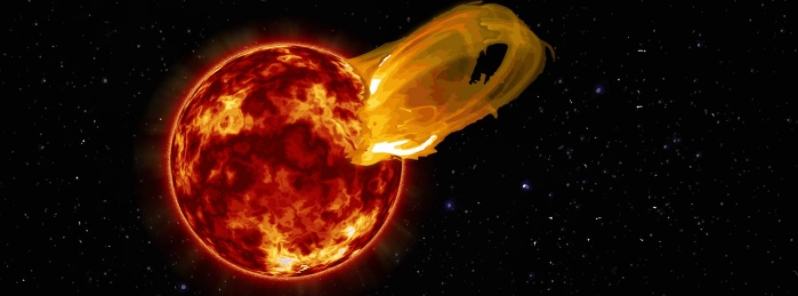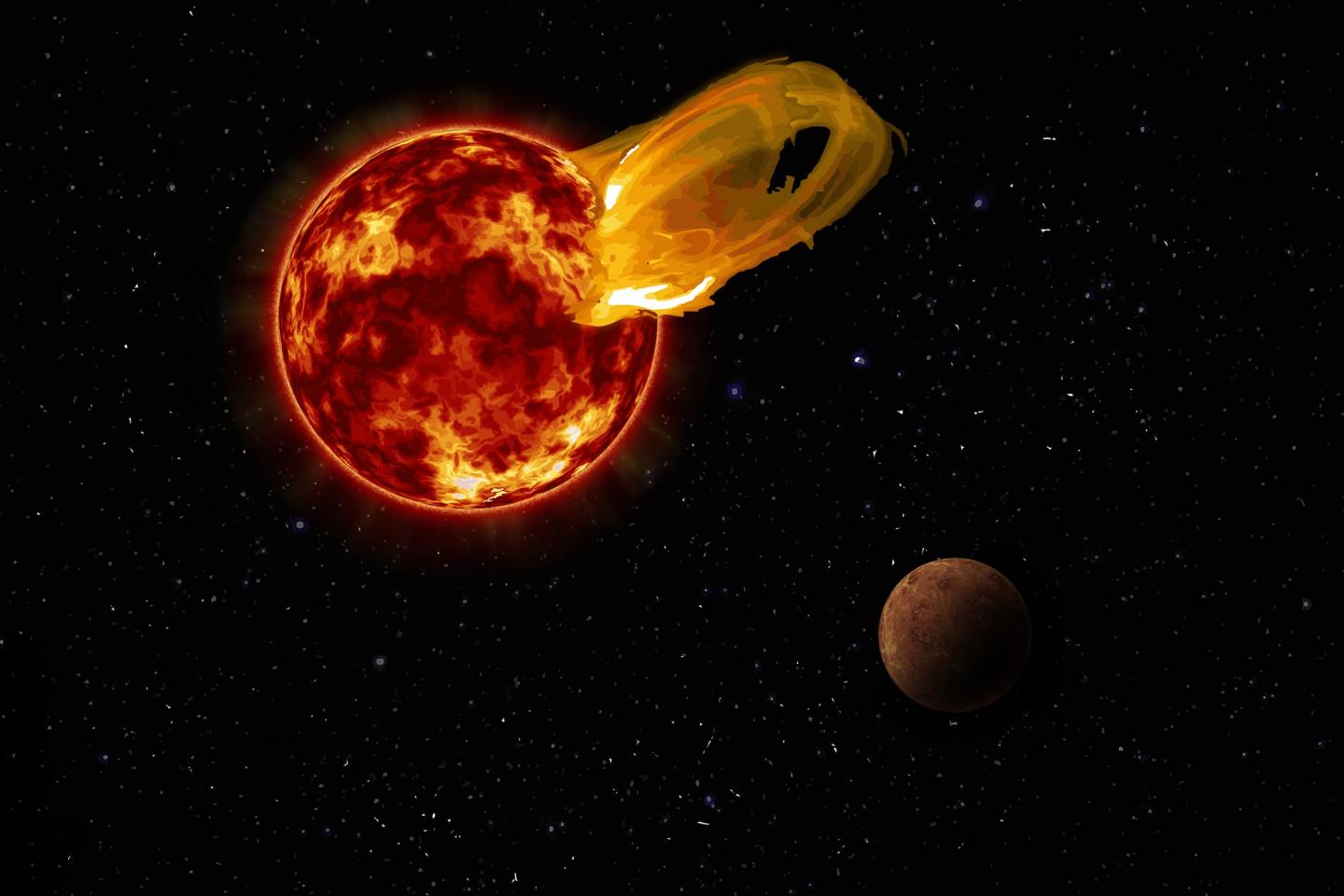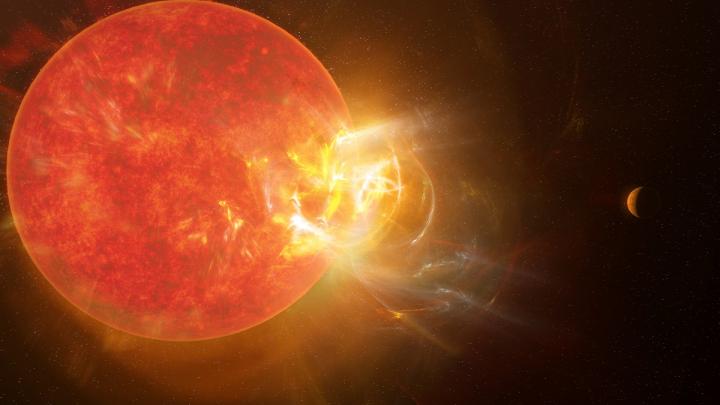Record-breaking solar flare erupts from Proxima Centauri

Scientists have observed an extreme, record-breaking solar flare from Proxima Centauri, our sun's closest star. The outburst was roughly 100 times more powerful than any similar event seen from our own sun.
Proxima Centauri is a small but 'mighty' red dwarf, said Meredith MacGregor, an astrophysicist at the University of Colorado (CU) Boulder. This star only has roughly one-eighth the mass of our own sun and is located four light-years or more than 32 trillion km (20 trillion miles) away.
In their new study, MacGregor and her team observed Proxima Centauri for 40 hours with nine telescopes on the ground and in space. They spotted a burst of radiation near the surface of the star, and it was one of the most violent in the galaxy.
"The star went from normal to 14 000 brighter when seen in ultraviolet wavelengths over the span of a few seconds," the astrophysicist noted. The findings suggest new physics that could change the way scientists see stellar flares.
The star has been a target for scientists hoping to find life beyond the solar system.
Proxima Centauri hosts at least two planets, one of which may be similar to the Earth. Designated Proxima Centauri b, this planet resides in what researchers call the "habitable zone" — an area around a star that has the right range of temperatures for retaining water on the surface.
However, red dwarves, which are the most common stars in the galaxy, are unusually active. "A lot of the exoplanets that we've found so far are around these types of stars. But the catch is that they're way more active than our sun. They flare much more frequently and intensely."
The team pointed nine different instruments at the star for 40 hours in several months in 2019. Five of them registered an enormous flare, capturing the event as it generated a wide spectrum of radiation.

Image: An artist's impression of a flare from Proxima Centauri. Credit: Roberto Molar Candanosa / Carnegie Institution for Science, NASA/SDO, NASA/JPL.
"It's the first time we've ever had this kind of multi-wavelength coverage of a stellar flare. Usually, you're lucky if you can get two instruments," said MacGregor.
It was one of the most in-depth anatomies of a flare from any star in the galaxy. The event, which was observed on May 1, 2019, lasted seven seconds. It generated both ultraviolet and millimeter radiation.
"In the past, we didn't know that stars could flare in the millimeter range, so this is the first time we have gone looking for millimeter flares," she explained. The millimeter signals could help researchers collect more information about how stars produce flares. As of now, scientists assume that these outbursts happen when magnetic fields near a star's surface twist and snap, creating explosive consequences.
"Proxima Centauri's planets are getting hit by something like this not once in a century, but at least once a day if not several times a day. There will probably be even more weird types of flares that demonstrate different types of physics that we haven't thought about before."
"If there was life on the planet nearest to Proxima Centauri, it would have to look very different than anything on Earth. A human being on this planet would have a bad time."

Image credit: NRAO/S. Dagnello
Reference
"Discovery of an Extremely Short Duration Flare from Proxima Centauri Using Millimeter through Far-ultraviolet Observations" – MacGregor, M. A., et al. – The Astrophysical Journal Letters – DOI: 10.3847/2041-8213/abf14c
Abstract
We present the discovery of an extreme flaring event from Proxima Cen by the Australian Square Kilometre Array Pathfinder (ASKAP), Atacama Large Millimeter/submillimeter Array (ALMA), Hubble Space Telescope (HST), Transiting Exoplanet Survey Satellite (TESS), and the du Pont Telescope that occurred on 2019 May 1. In the millimeter and FUV, this flare is the brightest ever detected, brightening by a factor of >1000 and >14,000 as seen by ALMA and HST, respectively. The millimeter and FUV continuum emission trace each other closely during the flare, suggesting that millimeter emission could serve as a proxy for FUV emission from stellar flares and become a powerful new tool to constrain the high-energy radiation environment of exoplanets. Surprisingly, optical emission associated with the event peaks at a much lower level with a time delay. The initial burst has an extremely short duration, lasting for <10 s. Taken together with the growing sample of millimeter M dwarf flares, this event suggests that millimeter emission is actually common during stellar flares and often originates from short burst-like events.
Featured image credit: Roberto Molar Candanosa / Carnegie Institution for Science, NASA/SDO, NASA/JPL.

Commenting rules and guidelines
We value the thoughts and opinions of our readers and welcome healthy discussions on our website. In order to maintain a respectful and positive community, we ask that all commenters follow these rules.